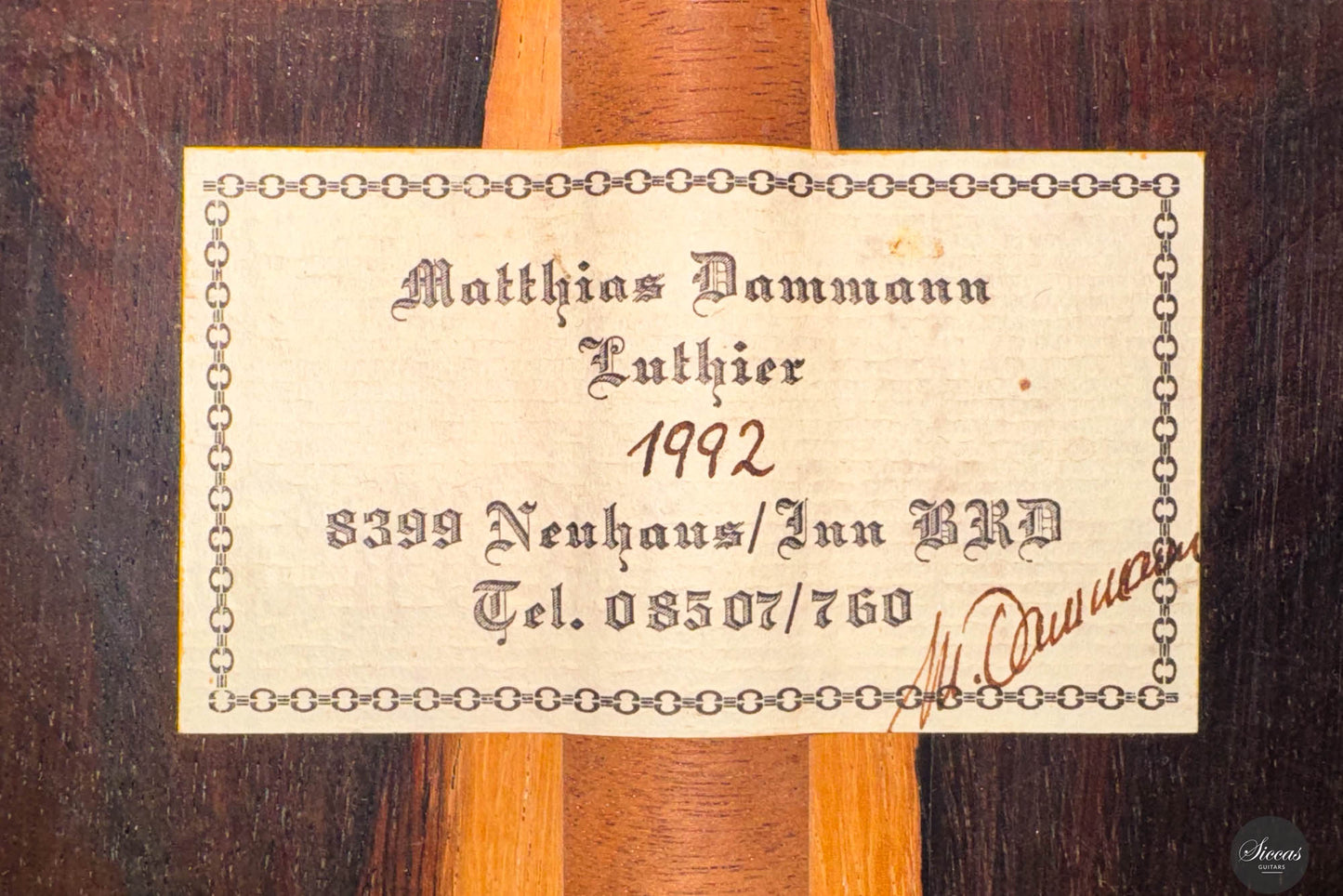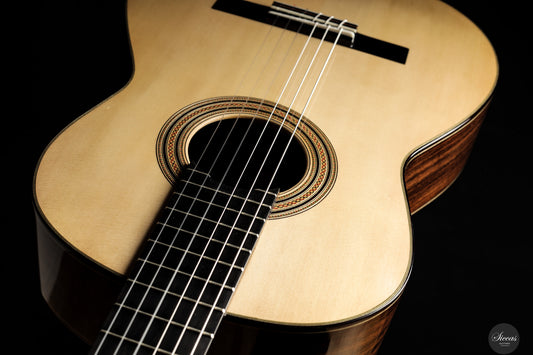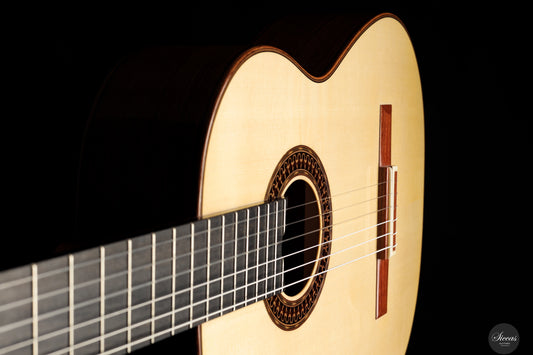Sold
Matthias Dammann - 1992 - Solidtop
Matthias Dammann - 1992 - Solidtop
Details
Details
Luthier:
Matthias Dammann
Overview
Overview






















Video overview
Some text about the video block with SEO. Some text about the video block with SEO.





More details about the guitar
About the luthier
Matthias Dammann is an extraordinary German luthier, precursor, and pioneer of double-top guitars. He always led a lot of research, studying the sound of guitars from the past, such as Antonio de Torres’ ones, and patenting his innovations. He brought many positive changes in the guitar conception of the end of the twentieth century. His wooden “sandwich double-tops” and later his Nomex double-tops are incredibly light. They give the guitar an immediate response, outstanding volume, and blissful playability. The guitarists’ reaction to Matthias Dammann’s guitars was immediate, and performers such as David Russell, Manuel Barrueco, the Beijin Guitar Duo, etc., have been playing and recording on them for a long time.The 1992 Matthias Dammann Solid Top guitar exemplifies the exquisite craftsmanship and attention to detail that have made Matthias Dammann a revered name in the world of luthiery. Known primarily for his revolutionary advancements in double-top guitar construction, Dammann’s earlier works, such as this solid-top model, are equally commendable and showcase his profound mastery over traditional guitar-making techniques. This particular guitar, with its cedar solid top, is a masterpiece that stands as a tribute to Dammann’s meticulous and passionate approach to guitar building. It offers even tonality, enchanting charm, and impressive volume, which, combined with its outstanding playability, makes it an exceptional instrument. The soundboard, a crucial element in defining the guitar’s voice, has been expertly tuned, demonstrating Dammann’s deep understanding of acoustic science and his commitment to achieving the perfect sound.
About the guitar
As a pre-loved instrument, this guitar not only carries the legacy of its maker but also the history of the musicians who have played it, evident from the playing marks and the well-repaired stable cracks in the Brazilian rosewood. The solid cedar soundboard also features one professionally repaired and stabilized crack, ensuring that the guitar’s structural integrity and tonal quality remain intact. These signs of use do not detract from the instrument’s beauty; rather, they add character and a sense of history to this unique creation. The 1992 Matthias Dammann Solid Top guitar is not only a fine musical instrument but also a collector’s item, sought after for its rarity and the remarkable sound quality it offers. It represents a significant piece in the evolution of guitar making, showcasing the early work of a luthier who would go on to change the course of classical guitar construction. This guitar is a testament to the enduring beauty and functionality of Dammann’s work, making it a prized possession for both musicians and collectors.
Otto Rauch is a German guitar maker from the small town of Obermoschel in Rheinland-Pfalz. With over 35 years of experience as a guitar maker, he is one of the German pioneers of double-top construction. After repairing a Matthias Dammann guitar in the early 1990s, Otto Rauch began building doubel-top guitars. At first, he used cedar struts and then a balsa core, a construction he continued to develop over the years. While helping a friend set up his violin making business, Otto Rauch came across the name of the 18th century Venetian violin maker Domenico Montagnana. His cellos are praised for their dark tone, fantastic sound volume and enigmatic construction. As these three attributes reflect Otto’s construction, he adopted the name, and the Domenico Montagnana model was born.






































































